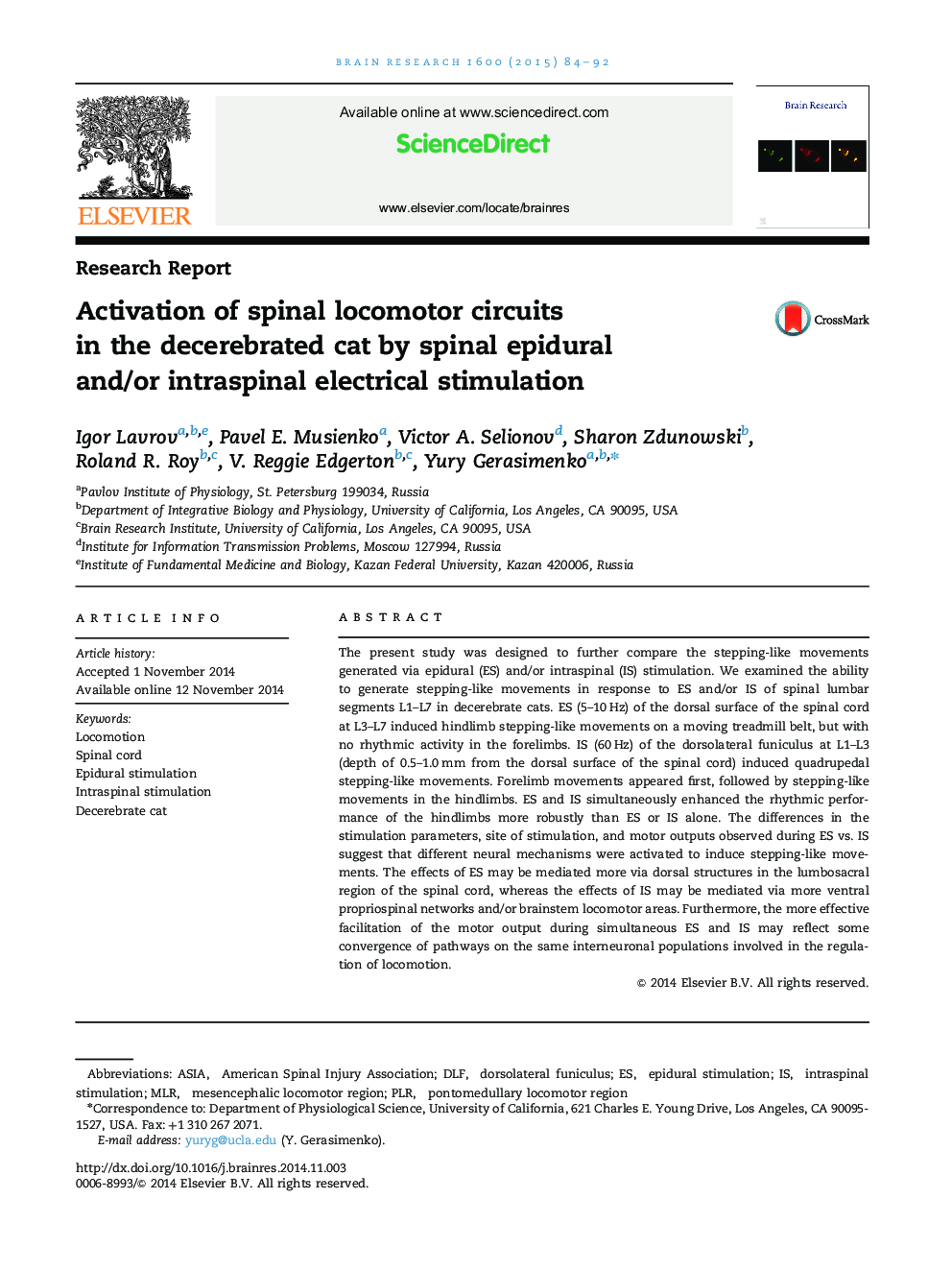| Article ID | Journal | Published Year | Pages | File Type |
|---|---|---|---|---|
| 6263137 | Brain Research | 2015 | 9 Pages |
â¢Two locomotor-like patterns can be generated by epidural and intraspinal stimulation.â¢Parameters, site of stimulation, and motor outputs are different for two stimulations.â¢Combination of epidural and intraspinal stimulations results in a synergistic effect.
The present study was designed to further compare the stepping-like movements generated via epidural (ES) and/or intraspinal (IS) stimulation. We examined the ability to generate stepping-like movements in response to ES and/or IS of spinal lumbar segments L1-L7 in decerebrate cats. ES (5-10Â Hz) of the dorsal surface of the spinal cord at L3-L7 induced hindlimb stepping-like movements on a moving treadmill belt, but with no rhythmic activity in the forelimbs. IS (60Â Hz) of the dorsolateral funiculus at L1-L3 (depth of 0.5-1.0Â mm from the dorsal surface of the spinal cord) induced quadrupedal stepping-like movements. Forelimb movements appeared first, followed by stepping-like movements in the hindlimbs. ES and IS simultaneously enhanced the rhythmic performance of the hindlimbs more robustly than ES or IS alone. The differences in the stimulation parameters, site of stimulation, and motor outputs observed during ES vs. IS suggest that different neural mechanisms were activated to induce stepping-like movements. The effects of ES may be mediated more via dorsal structures in the lumbosacral region of the spinal cord, whereas the effects of IS may be mediated via more ventral propriospinal networks and/or brainstem locomotor areas. Furthermore, the more effective facilitation of the motor output during simultaneous ES and IS may reflect some convergence of pathways on the same interneuronal populations involved in the regulation of locomotion.
